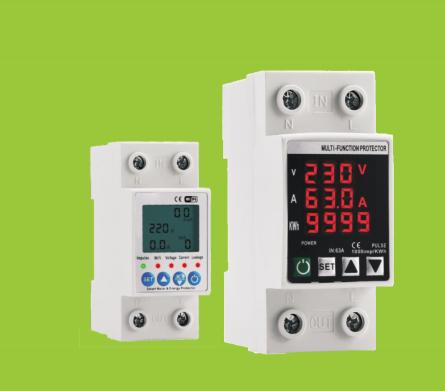A voltage protector safeguards electrical equipment by monitoring incoming voltage and automatically disconnecting power when the voltage goes outside a safe, preset range (too high or too low). After the voltage stabilizes and returns to normal levels, the device automatically re-establishes the power supply. Its core functions include surge/spike protection, under-voltage protection (brownout protection), and providing a necessary delay timer after power restoration for sensitive equipment like compressors.
Key Functions of a Voltage Protector
-
Over-voltage protection:Protects against sudden increases in voltage, known as surges or spikes, which can damage sensitive electronic components.
-
Under-voltage protection:Guards against brownouts (low voltage) by cutting off the power to prevent damage that can occur when equipment runs on insufficient voltage.
-
Delay Timer:A crucial feature for appliances like refrigerators or air conditioners that need a waiting period after a power cut before power is restored. This allows gas in the compressor to settle, preventing damage to the compressor.
-
Automatic Reconnection:Once the voltage returns to a safe and stable range, the protector automatically restores the power supply to the connected equipment.
-
Monitoring and Regulation:It continuously monitors the electrical system’s voltage levels and takes action when it detects any abnormality that could lead to equipment damage.
Why Voltage Protectors Are Important
-
Equipment Longevity:They prevent premature wear and failure of electrical appliances and devices.
-
Safety:They help to prevent overheating, short circuits, and other potential electrical hazards.
-
Cost-Effective:Instead of replacing damaged equipment, a voltage protector provides an affordable way to prevent costly repairs or replacements.
Post time: Sep-23-2025


